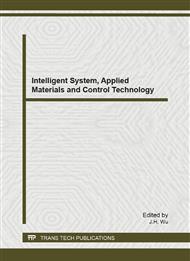[1]
Jorge O. Estima, Member, IEEE, and Antonio J. Marques Cardoso, Senior Member, Efficiency Analysis of Drive Train Topologies Applied to Electric/Hybrid Vehicles, IEEE Transactions on vehicular technology, VOL. 61, NO. 3, pp.1021-1031,March (2012).
DOI: 10.1109/tvt.2012.2186993
Google Scholar
[2]
A. Y. Saber and G. K. Venayagamoorthy, Plug-in vehicles and renewable energy sources for cost and emission reductions, IEEE Trans. Ind. Electron., vol. 58, no. 4, p.1229–1238, Apr. (2011).
DOI: 10.1109/tie.2010.2047828
Google Scholar
[3]
C. C. Chan, A. Bouscayrol, and K. Chen, Electric, hybrid, and fuel-cell vehicles: Architectures and modeling, IEEE Trans. Veh. Technol., vol. 59, no. 2, p.589–598, Feb. (2010).
DOI: 10.1109/tvt.2009.2033605
Google Scholar
[4]
Z. Amjadi and S. S. Williamson, A novel control technique for a switched-capacitor-converter-based hybrid electric vehicle energy storage system, IEEE Trans. Ind. Electron., vol. 57, no. 3, p.926–934, Mar. (2010).
DOI: 10.1109/tie.2009.2032196
Google Scholar
[5]
K. I. Laskaris and A. G. Kladas, Internal permanent-magnet motor design for electric vehicle drive, IEEE Trans. Ind. Electron., vol. 57, no. 1, p.138–145, Jan. (2010).
DOI: 10.1109/tie.2009.2033086
Google Scholar
[6]
C. Liu, K. T. Chau, and J. Z. Jiang, A permanent-magnet hybrid brushless integrated starter–generator for hybrid electric vehicles, IEEE Trans. Ind. Electron., vol. 57, no. 12, p.4055–4064, Dec. (2010).
DOI: 10.1109/tie.2010.2044128
Google Scholar
[7]
M. B. Camara, H. Gualous, F. Gustin, A. Berthon, and B. Dakyo, DC/DC converter design for supercapacitor and battery power management in hybrid vehicle applications—Polynomial control strategy, IEEE Trans. Ind. Electron., vol. 57, no. 2, p.587–597, Feb. (2010).
DOI: 10.1109/tie.2009.2025283
Google Scholar
[8]
Z. Amjadi and S. S. Williamson, Power-electronics-based solutions for plug-in hybrid electric vehicle energy storage and management systems, IEEE Trans. Ind. Electron., vol. 57, no. 2, p.608–616, Feb. (2010).
DOI: 10.1109/tie.2009.2032195
Google Scholar
[9]
T. Azib, O. Bethoux, G. Remy, C. Marchand, and E. Berthelot, An innovative control strategy of a single converter for hybrid fuel cell/supercapacitor power source, IEEE Trans. Ind. Electron., vol. 57, no. 12, p.4024–4031, Dec. (2010).
DOI: 10.1109/tie.2010.2044123
Google Scholar
[10]
A. S. Samosir and A. H. M. Yatim, Implementation of dynamic evolution control of bidirectional DC–DC converter for interfacing ultracapacitor energy storage to fuel-cell system, IEEE Trans. Ind. Electron., vol. 57, no. 10, p.3468–3473, Oct. (2010).
DOI: 10.1109/tie.2009.2039458
Google Scholar


